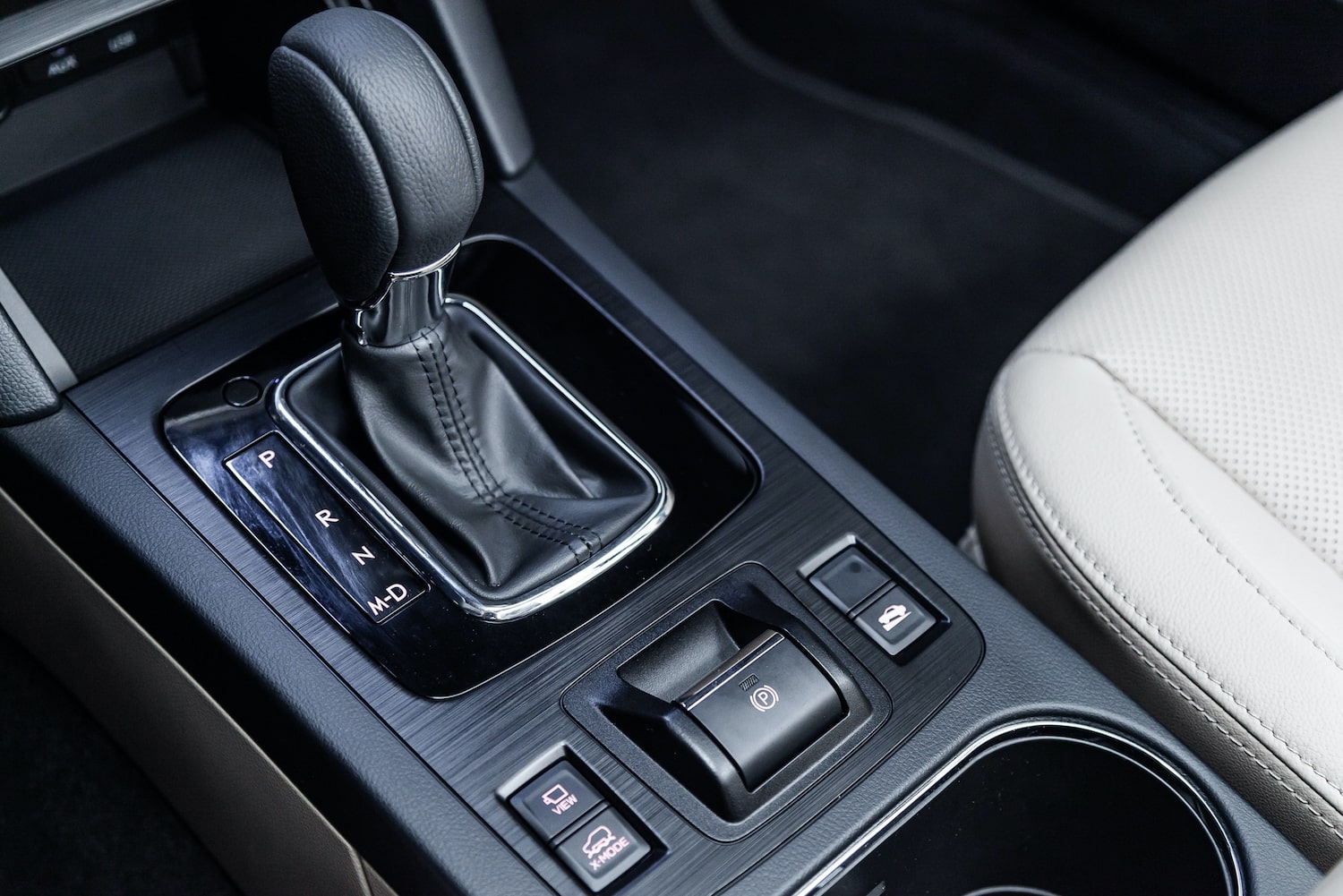After the engine, the transmission is perhaps the most important part of your vehicle. Below you can find out the basics of how it works, how to know if something’s wrong with it, and how to make sure you’ve got warranty coverage to protect you against the costs of transmission failure.
You can also go straight to our warranty buyer guide if you’d like to start comparing coverage options.
What Is the Transmission, How Does It Work, and What Are the Different Types?
The transmission’s function is to transfer sufficient power from the engine to the wheels to make the vehicle move at different speeds. How it achieves this varies according to the type of transmission. The Universal Technical Institute details the variations, but there are five key technologies in use today:
- Manual transmission: The traditional stick-shift transmission is essentially a complex set of gears and involves the driver pushing down the clutch pedal to disengage the engine from the transmission and selecting the right gear with the shifter, before releasing the clutch to re-engage the engine and transmission. Manual transmissions are generally more reliable than other types as there’s less to go wrong. They’re also usually less expensive to repair.
- Semi-automatic (also known as automated manual) transmission: An automatic clutch in the transmission means you can change gear without the clutch pedal. Gears can be changed using paddles rather than a stick shift.
- Dual-clutch transmission: Similar to the semi-automatic, it operates the clutch but also changes gears automatically (or this can be done using paddles). As the name indicates, it has two clutches, meaning they can be used alternately as you move through the gears to keep the power supply more uniform.
- Automatic transmission: Automatic transmissions use what’s called a torque converter to connect the engine and the gearbox, which contains a planetary gear set. To change the gear ratio, fluid is used to operate various brakes and clutches, controlled by the vehicle’s electronic control unit (ECU). This is the most common transmission, and the driver experience is much simpler, but with such a complex system working behind the scenes, repairs can be more expensive.
- Continuously variable transmission (CVT): An alternative transmission system that instead of gears uses a series of belts and pulleys, controlled by the vehicle’s computer, the CVT is the most fuel efficient of all transmission types.
What Happens If Your Transmission Has a Problem?
Not all transmission repairs are expensive, but they can run up to the thousands if you need a whole new one. Consumer review site Angie’s List notes that while a repair leak can typically cost around $150-200, replacing the transmission could set you back somewhere in the region of $4,000-8,000.
If you’re concerned about your transmission, get it checked out early, as driving with a problem can exacerbate the problem and lead to more expense. John Ibbotson, chief mechanic at Consumer Reports, says: “Transmission problems can lead to a range of issues such as overheating, slipping gears, and holding on to a gear for too long. Ultimately, minor concerns can lead to catastrophic failure, leaving the car undrivable.”
Here are the main things to look out for and get checked out:
- Check engine light. A transmission problem could trigger a check engine light, and if you’ve eliminated other possibilities or you’re experiencing anything in the list below too, it’s time to get a mechanic to check your transmission.
- Delays in power. Have you noticed the vehicle lagging before accelerating when you move into drive? This can be a sign of transmission problems.
- Slipping gears. A common symptom, gear slipping is what it sounds like – you’re in gear and it slips out of it. This can occur if there’s a problem with the part of the transmission that keeps the gears in place.
- Rough gear shifts. Unusual shakes and grinds are never a good sign when you’re driving, and if you feel these vibrations when changing gear, it could be a sign your transmission needs attention. The sooner you can get these issues checked out, the less the damage to your vehicle.
- Leaks. Leaking fluid from the transmission could be an indicator of a serious problem and you should get the car checked out. You can usually spot transmission fluid leaks as the fluid is usually a distinctive red color.
- Burnt smell. Burnt odors when driving is cause for concern, and one of the things to check is the transmission fluid. If it smells burnt, it could indicate that the transmission is overheating.
How Can You Avoid Transmission Repair Costs?
Transmission problems can lead to some of the most expensive repairs you’ll face as a driver, so is it possible to avoid these costs? We think it is—here’s how:
- Make sure you’ve done your research on any vehicle you’re buying and know if it’s a model that’s had many transmission problems reported.
- Keep up with the vehicle’s essential maintenance schedule, as recommended in the owner’s manual.
- Be aware of the symptoms of possible transmission problems and get them checked out without delay.
- There’s one more thing you can do, and it’s an important one if you want to avoid repair costs: make sure you have transmission warranty coverage.
How to Get a Transmission Warranty: A Step-by-Step Guide
If you’re buying a new car…
Step 1: Check your basic ‘bumper-to-bumper’ warranty covers the transmission. These factory warranties usually last 3 years or 36,000 miles. Ensure you know the maintenance and any other requirements so you don’t inadvertently void the warranty.
Step 2: Check what happens after your basic warranty expires. Does a powertrain warranty kick in automatically? If it does, it’s highly likely this covers the transmission, but again doublecheck the terms and your obligations.
Step 3: Before your factory warranties expire, if you’re keeping the vehicle, make sure you buy an extended warranty that offers transmission coverage.
If you’re buying a used car…
Step 1: You can buy a protection plan in the form of an extended warranty. Look for one that provides transmission coverage.
Extended Warranties: Key Facts
What are they?
Also known as vehicle service contracts, extended warranties provide coverage for maintenance and repairs after the manufacturer warranty has expired.
Where can you get them?
Some manufacturers offer their own extended warranties, or you can choose to buy one from a specialist third-party provider.
When do you need one?
They’re not compulsory like insurance, but they provide effective protection against costly repairs like transmission failure and are useful if you’re buying a new vehicle and plan on keeping it beyond the term of the factory warranty, or if you’re buying a used vehicle.
How can you find out more?
Read our intro to extended warranties to learn more and decide which type you need.
Which are the best extended warranties?
Check out our reviews of the main extended warranty providers.
You can find out more here about the different ways you can protect your car.
Sources
Consumer Reports: https://www.consumerreports.org/
Living the Dream Auto Care: https://www.ltdac.com/blog/5-common-signs-of-transmission-problems-and-what-to-do
Angie’s List: https://www.angieslist.com/articles/5-transmission-problems-you-cant-ignore.htm
Angie’s List: https://www.angieslist.com/articles/how-much-does-it-cost-repair-my-transmission.htm
Universal Technical Institute: https://www.uti.edu/blog/automotive/transmission
MotorBiscuit: https://www.motorbiscuit.com/4-types-of-car-transmissions-and-how-they-work/
Haynes: https://haynes.com/en-gb/tips-tutorials/what-transmission-your-car





